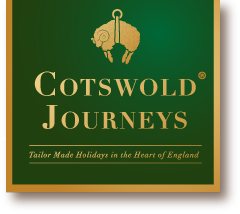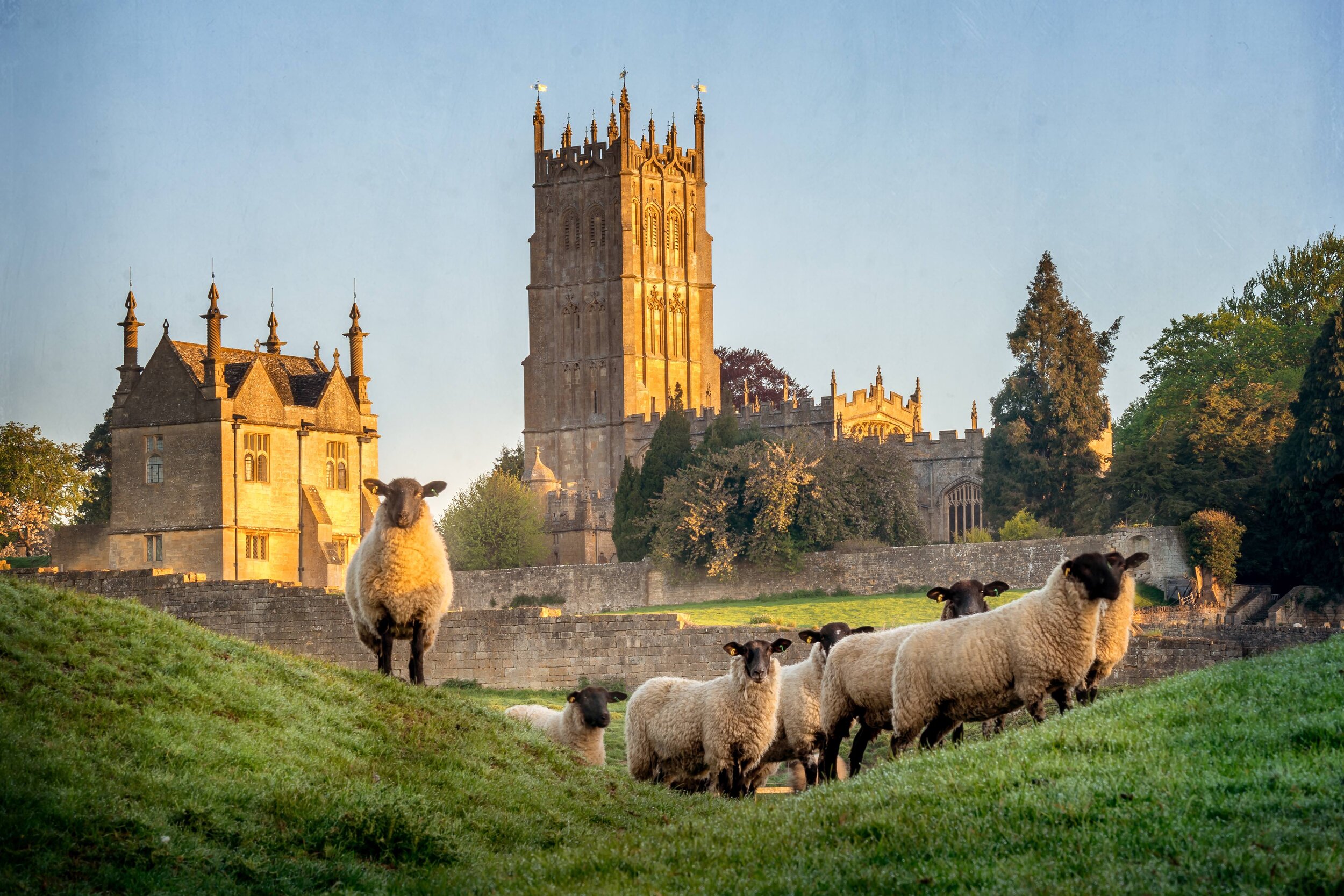‘In Europe the best wool is English and in England, the best wool is Cotswold’ (12th century saying).
One of the most significant contributors to the Cotswold landscape is the medieval wool industry. In the Middle Ages, the Cotswolds was well known throughout Europe for the quality of its wool. Following the Norman Cotswold SheepConquest of 1066, the church was able to increase its wealth by building on the already well-established wool industry. The open field system supported vast flocks over these hills and Cotswold sheep became the foundation of the English wool trade with Europe. Known as ‘Cotswold Lions’, because of their long, shaggy coats, with a faintly golden hue, they are still bred in small numbers but have been largely superseded by faster-growing breeds with higher resistance to disease. William Camden in 1610 wrote as part of his great work Britannia, a topographical and historical survey of Great Britain: “In these Woulds there feed in great numbers, flocks of sheep long-necked and square of bulk and bone, by reason (as it is commonly thought) of the wealthy and hilly situation of their pasturage; whose wool being so fine and soft is had in passing great account among all nations.”
By the 15th century, England was so dependent on wool that the Lord Chancellor’s seat in the House of Lords was made of wool and came to be known as the ‘woolsack’, a symbol of England’s premier industry that accounted for up to fifty percent of the English economy. In fact, an act was passed in the reign of King Charles II precisely to maintain the consumption of English wool. According to the Burial in Wool Acts of 1667 and 1678, all bodies were to be buried in wool only, unless they had died from the Plague. These acts were repealed only in 1814.
Not only the church benefitted – great wealth accrued to local merchants, who spent lavishly on their houses and, in an effort to ensure their route to paradise, made enormous contributions to the construction or enlargement of their churches. Some of these churches, huge in comparison with the villages in which they are located, came to be known as ‘wool churches’. The finest examples are Winchcombe, Chipping Campden, Northleach, Cirencester, and Fairford.
Some Cotswold buildings, renowned for their charm, were originally built in connection with the wool trade. The picturesque cottages that makeup celebrated Arlington Row (right) in Bibury, for example, were built in 1380 as a monastic wool store and converted into weavers’ cottages in the 17th century.
The wool trade became the weaving trade. In the 18th century cloth manufacture was concentrated in the steeper Stroud valleys, in the southern Cotswolds, where there was plenty of waterpower. At one point there were about one hundred and fifty mills producing cloth. Many still stand but today are mostly used for other purposes. One notable by-product of the post-Industrial Revolution cloth industry was the invention of the rotary lawnmower, the inspiration for which came from the machinery that cropped cloth for snooker tables.
The wool trade has left its mark in the names that are reminders everywhere of its former importance. Many villages have a ‘Sheep Street’. There are village names like Sheepscombe, Washbrook, Shipton, and Sherborne (‘brook where sheep are sheared’). And the ‘tires’ in Stow-on-the-Wold are the alleys opening onto the main square for the passage of sheep being herded to market.


0 Comments